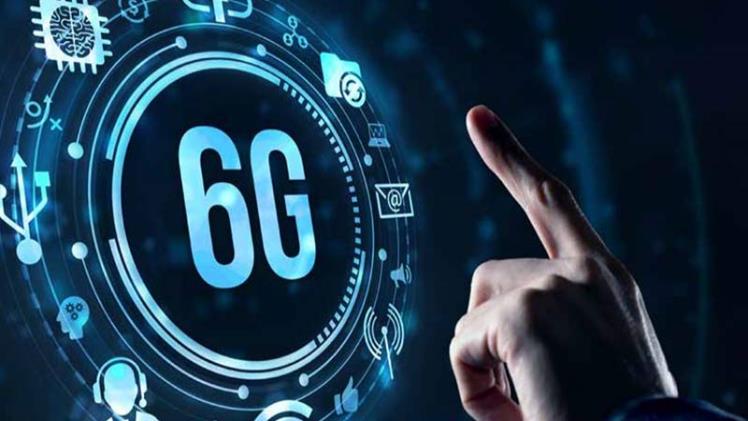As the world continues to evolve in the digital age, mobile communication technologies have kept pace by enabling faster speeds, reduced latency, and seamless connectivity. While 5G is still being rolled out globally, the next frontier—6G—is already taking shape. Projected to launch commercially around 2030, 6G promises to revolutionize mobile connectivity in ways that extend far beyond smartphones. It will empower innovations in AI, augmented reality (AR), holography, smart cities, and even brain-computer interfaces.
This article explores what 6G is, how it differs from 5G, and the profound impact it will have on mobile connectivity.
🌐 What is 6G?
6G, or the sixth generation of mobile network technology, is the successor to 5G. While it is still in the research and development phase, early projections suggest that 6G will:
- Deliver speeds up to 100 times faster than 5G
- Reduce latency to under 100 microseconds
- Support up to 10 million devices per square kilometer
- Utilize terahertz (THz) frequency bands
- Integrate AI and machine learning into the network’s core
Unlike previous generations, 6G is not just about faster internet—it’s about enabling intelligent and immersive digital experiences.
📶 6G vs. 5G: Key Differences
| Feature | 5G | 6G (Projected) |
|---|---|---|
| Peak Speed | ~10 Gbps | Up to 1 Tbps |
| Latency | ~1 ms | Under 0.1 ms (100 µs) |
| Frequency Band | mmWave (~30–300 GHz) | Terahertz (100 GHz – 10 THz) |
| AI Integration | Limited | Deep, native integration |
| Applications | Smart homes, IoT, automation | Holograms, digital twins, BCI |
📲 How 6G Will Transform Mobile Connectivity
1. Extreme Data Speeds and Zero Latency
With terabit-per-second speeds and microsecond-level latency, 6G will make real-time interactions virtually instant. Streaming 8K or even 16K video, playing ultra-smooth AR/VR games, or transferring massive files in seconds will become standard.
This will eliminate current mobile limitations, allowing even cloud computing and AI-powered apps to run seamlessly on mobile devices.
2. True Immersive and Mixed Reality Experiences
6G will unlock the full potential of augmented reality (AR), virtual reality (VR), and mixed reality (MR). You’ll be able to attend meetings, concerts, or classes as a lifelike hologram, interacting in real time.
- Virtual shopping could become fully immersive.
- Remote surgeries and advanced telemedicine will be more precise.
- Haptic feedback could enable users to feel textures in a virtual environment.
3. Hyper-Connected Smart Environments
6G will support 10x the number of connected devices compared to 5G, making it ideal for:
- Smart cities with intelligent traffic systems
- Autonomous vehicles communicating in real-time
- Industrial automation with instant machine-to-machine interaction
With every streetlight, appliance, and wearable device connected, 6G will be the backbone of the Internet of Everything (IoE).
4. AI-Driven Network Management
6G networks will integrate artificial intelligence to monitor, manage, and optimize performance autonomously. From predicting outages to dynamically allocating bandwidth, AI will ensure:
- Higher reliability
- Lower energy consumption
- Improved user experience
Users may experience context-aware services that adapt based on location, behavior, and device type.
5. Space-Air-Ground-Sea Integration
6G will not be confined to land-based infrastructure. It aims to provide global coverage by integrating:
- Low Earth Orbit (LEO) satellites
- Unmanned aerial vehicles (UAVs)
- High-altitude platforms (HAPs)
- Undersea communication systems
This means high-speed mobile internet could reach remote islands, rural mountains, deserts, and even oceans, providing true global connectivity.
🧠 Enabling Advanced Applications
6G is expected to power technologies that are still emerging today, such as:
- Digital twins: Real-time virtual replicas of physical systems (factories, cities, or even human bodies).
- Brain-computer interfaces (BCIs): Devices that allow direct communication between the human brain and machines.
- Quantum communication: Enhanced data encryption and security protocols using quantum mechanics.
These applications will redefine industries like education, defense, entertainment, healthcare, and more.
🚧 Challenges Ahead
While the promises of 6G are exciting, there are significant challenges to overcome:
- Spectrum Limitations
Terahertz waves are sensitive to weather and obstacles, requiring new transmission methods and materials. - Infrastructure Investment
Building a 6G-ready network will require trillions in investment globally, especially in base stations and data centers. - Security and Privacy
More connected devices mean greater vulnerability. New encryption models and security protocols will be crucial. - Standardization and Regulation
International coordination is needed to standardize frequency use, set protocols, and ensure equitable global access.
🕒 When Will 6G Be Available?
Most experts estimate that 6G will begin rolling out around 2030, with:
- Early trials and standards set between 2025–2028
- Commercial infrastructure beginning development by late 2028
- Global adoption likely taking a decade or more
Companies like Samsung, Huawei, Nokia, Ericsson, and academic institutions like MIT and the University of Oulu are already conducting 6G research.
📝 Conclusion
6G represents more than an incremental upgrade in mobile technology—it’s a paradigm shift. It will not only make your phone faster but also transform how we work, communicate, travel, and live. With terabit speeds, minimal latency, and AI-driven functionality, 6G will be the foundation of the next digital revolution.
As governments, tech companies, and research institutions race to make 6G a reality, one thing is clear: the future of mobile connectivity will be faster, smarter, and more immersive than anything we’ve seen before.
FAQ: The Impact of 6G on Mobile Connectivity
Q1: What is 6G technology?
A: 6G is the sixth generation of wireless communication technology, expected to succeed 5G. It aims to deliver ultra-fast data speeds, extremely low latency, and advanced connectivity for applications like holographic communication, smart cities, and fully autonomous systems.
Q2: How fast will 6G be compared to 5G?
A: While 5G offers peak speeds of up to 10 Gbps, 6G is projected to deliver speeds of up to 1 Tbps (terabit per second), making it 100 times faster than 5G.
Q3: When will 6G be available to the public?
A: 6G is currently in the research and development phase. Most experts estimate commercial rollout around 2030, with trials and early deployments beginning in the latter half of the 2020s.
Q4: What improvements will 6G bring to mobile connectivity?
A: 6G will enhance mobile connectivity by offering:
- Near-instant downloads and uploads
- Seamless global coverage (including remote areas)
- Improved energy efficiency
- Support for massive IoT deployments
- Enhanced mobile edge computing and real-time AI
Q5: How will 6G impact user experience?
A: Users can expect ultra-reliable connections for high-bandwidth applications like:
- Real-time cloud gaming
- VR/AR with minimal lag
- Holographic video calls
- Real-time language translation
- Smart wearables with AI-driven insights
Q6: What industries will benefit the most from 6G?
A: Key industries expected to benefit include:
- Healthcare (remote surgery, real-time diagnostics)
- Automotive (autonomous vehicle coordination)
- Manufacturing (robotics, automation)
- Telecommunications
- Entertainment and media (immersive experiences)
Q7: Will 6G improve network coverage in rural areas?
A: Yes. 6G aims to provide more uniform and global coverage, using satellite integration and high-altitude platform stations (HAPS) to connect remote and underserved regions.
Q8: What challenges does 6G face before becoming mainstream?
A: Some of the biggest challenges include:
- Developing new spectrum and hardware
- Massive infrastructure investment
- Privacy and security concerns
- Global standardization and regulations
Q9: How will 6G support the growth of the metaverse and AI?
A: 6G’s low latency and high bandwidth will enable real-time immersive experiences and complex AI operations at the edge, fueling innovations in the metaverse, digital twins, and smart robotics.
Q10: How can consumers prepare for 6G?
A: While 6G is still years away, consumers can:
- Stay updated on mobile tech trends
- Invest in future-ready devices
- Adopt 5G to become familiar with next-gen capabilities
- Explore new use cases in AR/VR and smart tech







